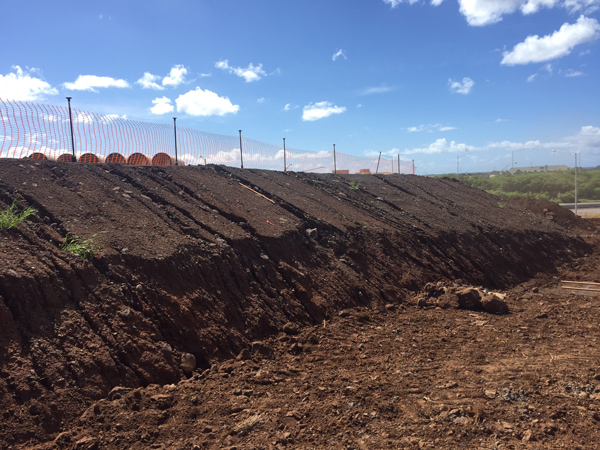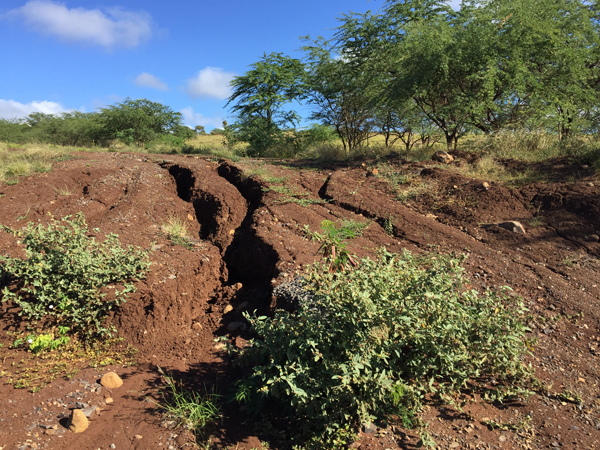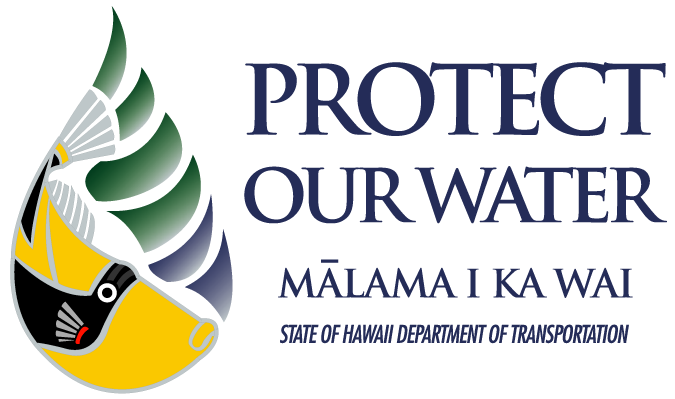Is erosion occurring on your project?
Erosion is the process by which soil particles are removed from the land surface by wind, water, or gravity. Sedimentation occurs when soil particles erode and then settle out. While natural erosion occurs at slow rates, erosion can be accelerated as a result of ground disturbing activities on construction sites causing sedimentation. It is important to understand the types of erosion that may occur and practices that can be implemented on construction sites to minimize erosion.
The three types of erosion that may occur as a result of rainfall includes: (1) sheet erosion; (2) rill erosion; and (3) gully erosion. Sheet erosion occurs when rainfall strikes the ground, flowing in a thin layer and dislodging soil particles. Rill erosion occurs when rainfall concentrates and cuts rills in the soil surface. Gully erosion occurs when several rills join together. Typically a rill can be walked or driven over, while a gully cannot be easily traversed.


Consider the following best management practices (BMPs) for erosion control on your construction projects:
- Construction sequencing to minimize the area exposed on a construction project at any given time
- Rolled erosion control products (RECPs) including erosion control blankets (ECBs)
- Mulching
- Hydroseeding
- Tackifiers
- Slope interceptors
When choosing a BMP for erosion control, it is best to consider implementing multiple BMPs to ensure adequate controls are in place to minimize erosion and prevent sedimentation. Proper erosion control reduces the need for sediment control. By minimizing the exposure of soil, the potential for erosion is greatly reduced. Additionally, regular inspections and maintenance of disturbed and exposed areas is needed to minimize erosion.

